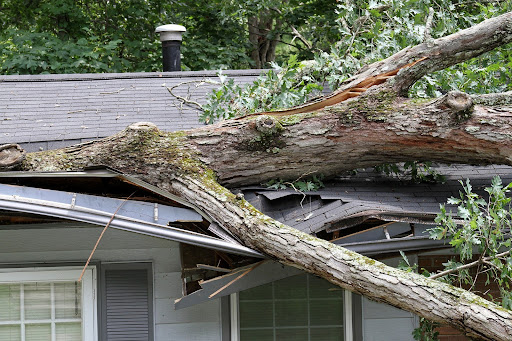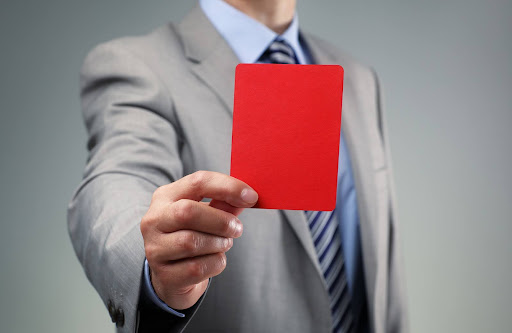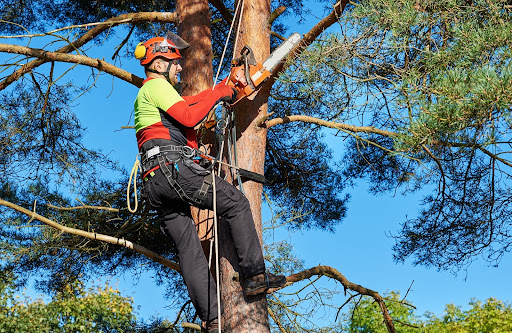Trees add beauty, shade, and value to a neighborhood. But sometimes, they can become safety hazards and create issues between neighbors. When that happens, your association needs to have a clear HOA tree trimming policy, which helps to prevent misunderstandings and maintain harmony within the community.
HOA Tree Trimming Responsibilities: Who Does What?
Your HOA’s governing documents will contain the rules you must follow regarding tree maintenance. With these policies, you can ensure the community’s landscaping adds to the beauty and safety of your neighborhood.
Your governing documents will outline who is responsible for trimming trees in certain areas of the community, how often tree trimming should occur, and the repercussions of non-compliance.
Here’s what homeowners and HOAs are responsible for when it comes to tree maintenance:
Homeowner Responsibilities

In most HOAs, the residents are in charge of tree maintenance within their private property. Part of this upkeep is ensuring branches don’t extend into your next-door neighbor’s yard. They should also ensure branches don’t block driveways and sidewalks, rest on power lines, or pose a safety hazard.
Homeowners also have to trim trees regularly to avoid excessive leaf shedding. It’s also good practice so you don’t have to worry about damaging fences, roofs, or even plumbing systems.
If you have a diseased or dying tree on your property, you, as the homeowner, are responsible for getting rid of it before it becomes a safety risk.
Many HOAs require residents to follow a specific set of rules for tree upkeep. If they neglect their responsibility or go against the rules, disputes may occur, and potential penalties may be imposed.
HOA Responsibilities
On the other hand, your HOA is responsible for maintaining trees in common areas. These may include the parks, sidewalks, gates and entranceways, and any other shared green spaces in the neighborhood.
The HOA needs to regularly trim the trees in these areas to avoid damages or disruptions. It should have seasonal tree maintenance schedules. For large-scale upkeep, they can work with professional landscaping surfaces.
The HOA should be in charge of removing dead and diseased trees in common areas. In non-emergency cases, they will need to seek local government or homeowner approval. But if the dead tree is an immediate safety risk, the HOA is often allowed to remove it without prior approval.
City or County Responsibilities
Sometimes, the local government has jurisdiction over tree maintenance near roads, sidewalks, and public rights of way.
Municipalities or cities are usually in charge of trimming trees along public roads. They need to ensure that traffic signals, road signs, and visibility are not obstructed for both drivers and pedestrians. In some cases, ordinances are passed outlining tree upkeep and the proper way of reporting or removing dead or dangerous trees.
HOA Tree Removal Policy: When is it Necessary?
Trimming trees should be part of routine maintenance. Some cases, however, call for a full removal. For this, the HOA tree removal policy and process usually varies by community, but they typically include conditions under which a tree must be removed. These may be the following:
- Dead or dying trees that pose a safety risk
- Trees causing structural damage to sidewalks, driveways, or homes
- Trees that block roadways, sidewalks, or interfere with utility lines
- Invasive species that threaten native plants or local ecosystems
In most HOAs, residents need the association’s approval to remove trees. This is usually needed when removing trees that can affect the neighborhood’s look or when removing heritage trees. People who remove trees without approval may face penalties.
Dealing with Untrimmed Neighbor Trees

One of the most common complaints in HOAs involves a neighbor’s overgrown trees. A homeowner may wonder, “My neighbor doesn’t trim his trees—what can I do?” In most cases, the HOA’s rules will dictate how such disputes should be handled. Here are a few common approaches:
- Direct Communication: Residents can first try talking to their neighbors about the overgrown tree. Usually, a polite conversation can easily resolve the issue without escalating further.
- HOA Intervention: If politely asking your neighbor doesn’t work, the association may mediate the issue. The HOA may step in by issuing a notice to the homeowners reminding them of their obligations under community guidelines.
- Legal Rights: In many states, homeowners have the right to trim branches that grow onto their property as long as they do not destroy the tree’s health. However, the specifics vary by location, so it’s best to check state and local laws.
The Impact of Trees on Pedestrians and Safety Considerations
Overgrown trees typically pose safety risks on top of aesthetic issues. Untrimmed branches may:
- Obstruct sidewalks and force pedestrians into the street
- Block stop signs or streetlights, reducing visibility
- Increase the risk of falling branches during storms
HOAs should ensure that community trees are regularly maintained to prevent these hazards. If a homeowner’s tree interferes with public safety, the HOA may require them to trim it or, in extreme cases, arrange for the work to be done and bill the homeowner.
Enforcing HOA Tree Trimming Policies
To maintain order and prevent disputes, HOAs must enforce tree trimming policies consistently. Some best practices include:
Routine Inspections
Regularly checking the neighborhood for tree-related issues can help prevent problems before they escalate. As a best practice, your HOA needs a structured inspection schedule. This will ensure that trees in both common areas and private properties are evaluated at least once or twice a year.
During inspections, HOA representatives or hired arborists can identify trees that pose safety risks, block public pathways, or encroach on neighboring properties. Routine inspections allow HOAs to address issues proactively before they lead to disputes among homeowners.
If hazardous conditions are found, the HOA can issue maintenance notices to responsible homeowners, ensuring that problems are resolved on time.
Clear Guidelines
Providing homeowners with written guidelines on tree maintenance expectations can reduce confusion. These guidelines should specify trimming frequency, acceptable tree heights, and regulations regarding trees that extend into neighboring properties. The HOA should also outline procedures for handling disputes involving tree overgrowth and penalties for non-compliance.
Having clear policies in place ensures that all homeowners understand their responsibilities and rights regarding tree maintenance. Many HOAs distribute these guidelines in welcome packets for new residents and publish them on community websites or newsletters to keep homeowners informed.
Fines and Penalties

If a homeowner refuses to comply with tree trimming requirements, the HOA may impose fines or, in some cases, hire a professional to trim the trees and charge the homeowner for the cost. Penalties can escalate based on non-compliance severity, starting with warning notices and increasing to monetary fines if the homeowner fails to take action.
In extreme cases where an untrimmed tree poses a danger to the community, the HOA may handle the trimming directly and send the homeowner an invoice for the incurred costs.
Some HOAs also place liens on properties if fines remain unpaid, ensuring compliance through financial accountability. Enforcing penalties fairly and consistently helps maintain community standards and prevents ongoing disputes over tree maintenance.
Safety and Harmony
Tree maintenance is a crucial aspect of living in an HOA community. If your HOA lacks a well-defined tree trimming policy, now is the time to prevent future conflicts and keep your neighborhood looking its best.
Freedom Community Management provides HOA management services in Florida, including HOA policy enforcement. Call us at 904-490-8191 or contact us online to learn more!


